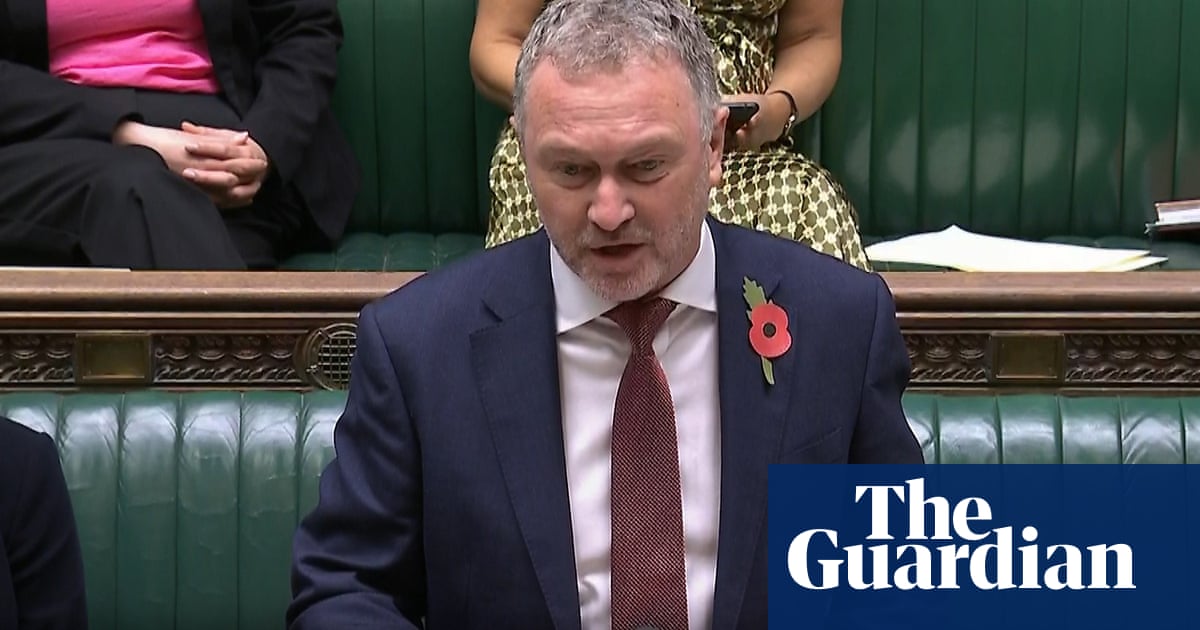It all seemed like an innocent bit of fun. In the early 2000s, Russ McKamey and his then wife Carol went on TV to explain that they were spending $30,000 to make Halloween at their home bigger and better than anyone elseâs. Fans queued around the block of the quiet San Diego suburb to experience fake blood, spooky props and teenage actors giving them jump scares. Until, that is, things got much, much darker.
By 2012, participants were being waterboarded, chained up in boxes and almost buried alive after McKamey decided to make McKamey Manor a more extreme, kid-free zone. âI was seeing people come out shaking uncontrollably ⦠one guy, it looked like his nose was broken; another burst a blood vessel in his eye â it was full of blood,â says Mercedes Ann, a certified lifeguard with basic first aid training who was there to deal with the fallout. âPeople would have psychotic breakdowns â thatâs the only time they would stop the tour. Then they would bring me in to calm them down.â She was 15.
âWe didnât get paid or anything,â explains Ann, who began volunteering at the manor, aged 13, after meeting McKamey at a community barbecue â back when âRuss and Carol were like the cool aunt and uncleâ. Over the following years, McKamey would not take a single payment for entering the manor; instead, participants were required to bring dog food to give to charity.
Itâs a story I found myself immersed in recently, when I created the podcast series Inside McKamey Manor. Everyone I spoke to seemed to have an eye-opening tale, all of which seemed too wild to be true. Although when we put a detailed list of them all to McKamey, he chose not to comment.
As news of this extreme haunt spread via TV appearances and shows such as Dark Tourist on Netflix, demand grew high. According to McKamey, the manor had a 24,000-person waiting list and there was a $20,000 reward for anyone able to complete it (no one ever has). Participants were required to sign a waiver up to 40 pages long, stating you could be subjected to âdrowning, electric shocks and exposure to poisonous animalsâ, be âslapped, shoved and restrainedâ and that it may result in âbroken bones, dislocation of limbs, crushed limbs and blackoutsâ.
If no one was getting paid, why were people agreeing to volunteer? Kris Smith saw McKamey on the 2017 documentary Haunters: The Art of the Scare. They became friends after Smith got in touch, offering to help McKamey with some graphic design work. They began speaking on the phone every day and formed a friendship. As Smith says: â[McKamey] was a goof. I didnât really take him seriously.â But, in 2018, Smith, who had already gone through the manor once and coped, decided to go through a second time.
âHe gave me threats of being buried alive ⦠I got lowered into a well 10 ft in the ground.â He was made to unlock padlocks via combination codes while water was filling the well. âI tell him Iâm done for the night, Iâm tired,â Smith says, but McKamey persuaded him to do one more thing. Smith says he ended up being dragged in a metal trough behind a truck. âRuss had told me: âIâm always gonna know when to stop, donât worry about itââ. While in the trough, Smith says, â[McKamey] started shovelling dirt on me over and over again ⦠I start waving my hand while saying I quit.â But Smith says McKamey didnât stop immediately, that in fact he would continue a tour as long as heâs âhaving funâ. Their friendship soon broke down.
McKamey seemed to have a network of people like Smith willing to help him for nothing. But 2019 marked the beginning of a shift. There were growing concerns across social media about the manor, especially on Reddit. Debates cropped up as to whether McKamey was running a âred roomâ â livestreaming videos of people being abused or tortured to sell on the dark web. An online petition titled âShut down McKamey Manorâ received 192,744 signatures. Since then, there have been eight petitions to do just that. Smith is part of the global movement to close the manor.
McKamey was no stranger to documenting his life and posting it online. In 2009, he launched his YouTube channel, McKamey Manor Presents. By 2019, the things his participants had to endure were brandished across the internet as part of the deal of signing up. In one video, a man has his eyes duct taped and is seemingly covered in oil and a blood-like substance. An âactorâ is shaving his head and holding a hammer over his teeth, threatening to smash them. In another, the same man appears to have blood pouring from his mouth while he lays unconscious on the ground.
after newsletter promotion
Gabriella Hardiman, 19, was one of those whose video was posted on the YouTube page. âI felt a little weird with the camera,â she admits. Having seen McKamey on TV, she figured that most of the controversial acts were part of the theatre. She signed up via the manorâs official Facebook group and quickly received a call that âthereâs a cancellation, you have to come tomorrow, this is the only chanceâ. Hardiman was chained inside a freezer box, had a tarantula put on her face, and had a panic attack mid-experience.
âI remember being in a straitjacket lying in water [and] having it poured over my face,â she recalls. âSomeone called the cops because we were outside screaming.â The manor had so many problems in the community that the haunt ended up moving to Tennessee in 2017. âI posted a video against him in 2017,â says Hardiman. âIt was on YouTube for two days before I took it down, because the hate I was getting from Russ and the community was so insane. Itâs why I waited so long to talk about it, and why in every interview my voice is shaking because Iâm so scared how people are going to perceive it.â She feels shame about speaking out, because she signed a waiver consenting to take part.
What makes the waiver even more controversial is that it may not even legally stand up. âIâve read a lot of contracts over the past 20 years; Iâve never seen anything like this,â says Thomas Greer, a lawyer from Tennessee. While determining whether every detail in peopleâs experiences was legal is extremely complicated, Greer is clear on one thing: was it legal for 13-year-old Mercedes Ann to sign a contract? âNo, thatâs not legal,â he says.
By 2023, complaints about the manor were too prominent to ignore. Hulu released a documentary Monster Inside: Americaâs Most Extreme Haunted House, presenting first-hand accounts of the manor and the trauma participants had experienced. McKamey filed a lawsuit alleging invasion of privacy. In October 2023, YouTuber Reckless Ben made it his mission to complete the manor, only to discover that McKamey was now only operating a physical bootcamp in his front garden instead. After hearing testimonies from participants, Ben Schneider went viral trying to shut down the manor. He was regularly posting exposés of McKameyâs behaviour, passing on footage ex-employees had given him to the police.
Unrelated to the manor, a personal altercation led to McKameyâs arrest in July 2024 for domestic violence and the attempted murder and rape of an ex-girlfriend. In September, the charges against him were dropped. If the Facebook post on the group Keep McKamey Manor Open is anything to go by, there are still fans of McKamey, despite the controversy. âDoes anyone know how to get signed up for the McKamey Manor?â a fan asked in early October. âI want a shot at the challenge.â The manorâs closure, it seems, is still very much up for debate.









